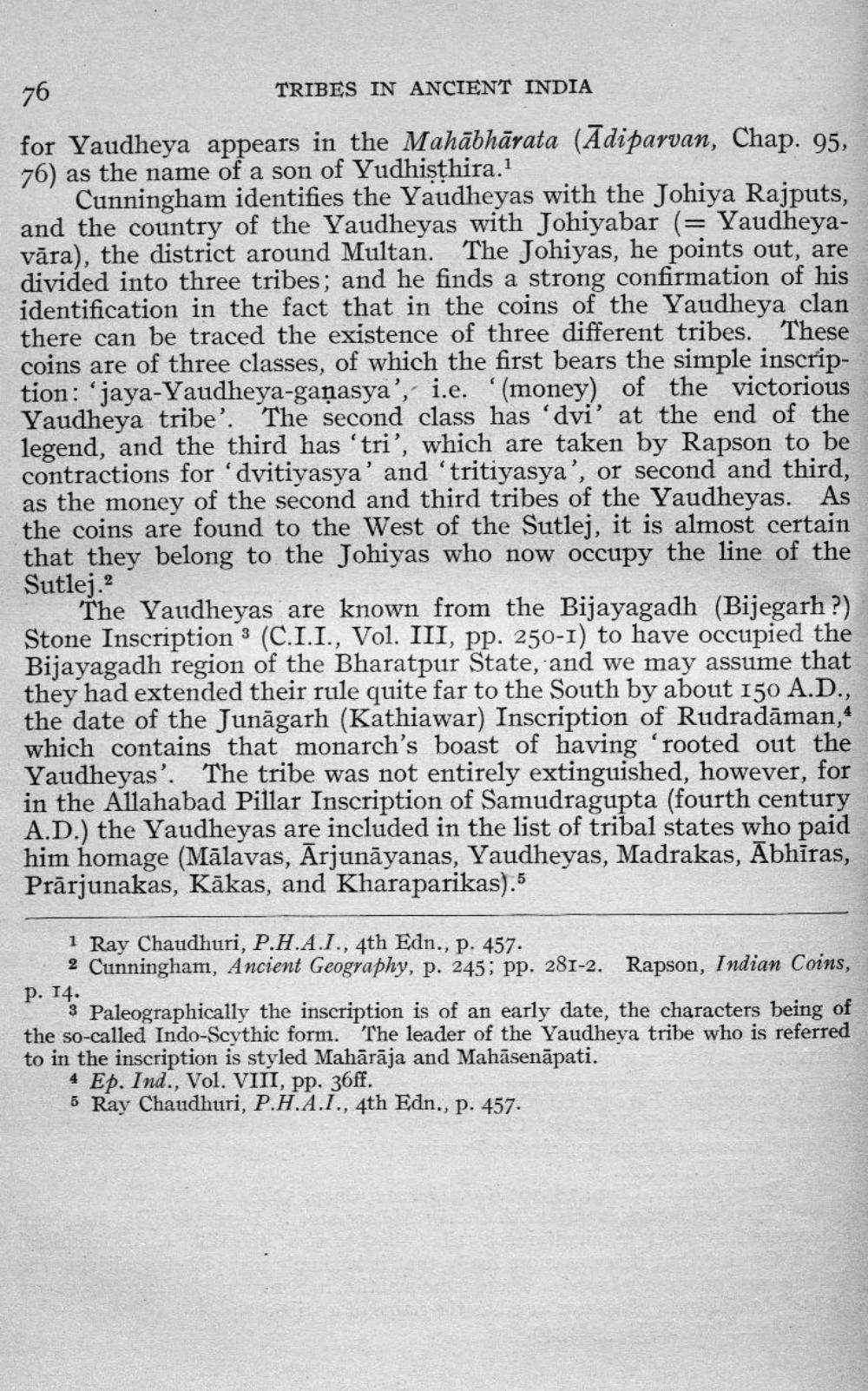________________
76
TRIBES IN ANCIENT INDIA
for Yaudheya appears in the Mahabharata (Adiparvan, Chap. 95, 76) as the name of a son of Yudhisthira.1
Cunningham identifies the Yaudheyas with the Johiya Rajputs, and the country of the Yaudheyas with Johiyabar (= Yaudheyavāra), the district around Multan. The Johiyas, he points out, are divided into three tribes; and he finds a strong confirmation of his identification in the fact that in the coins of the Yaudheya clan there can be traced the existence of three different tribes. These coins are of three classes, of which the first bears the simple inscription: 'jaya-Yaudheya-ganasya', i.e. (money) of the victorious Yaudheya tribe'. The second class has 'dvi' at the end of the legend, and the third has 'tri', which are taken by Rapson to be contractions for 'dvitiyasya' and 'tritiyasya', or second and third, as the money of the second and third tribes of the Yaudheyas. As the coins are found to the West of the Sutlej, it is almost certain that they belong to the Johiyas who now occupy the line of the Sutlej.2
The Yaudheyas are known from the Bijayagadh (Bijegarh ?) Stone Inscription (C.I.I., Vol. III, pp. 250-1) to have occupied the Bijayagadh region of the Bharatpur State, and we may assume that they had extended their rule quite far to the South by about 150 A.D., the date of the Junagarh (Kathiawar) Inscription of Rudradāman,* which contains that monarch's boast of having 'rooted out the Yaudheyas'. The tribe was not entirely extinguished, however, for in the Allahabad Pillar Inscription of Samudragupta (fourth century A.D.) the Yaudheyas are included in the list of tribal states who paid him homage (Mālavas, Arjunayanas, Yaudheyas, Madrakas, Abhiras, Prarjunakas, Kākas, and Kharaparikas).5
1 Ray Chaudhuri, P.H.A.I., 4th Edn., p. 457.
2 Cunningham, Ancient Geography, p. 245; pp. 281-2. Rapson, Indian Coins,
p. 14.
3 Paleographically the inscription is of an early date, the characters being of the so-called Indo-Scythic form. The leader of the Yaudheya tribe who is referred to in the inscription is styled Mahārāja and Mahāsenāpati.
4 Ep. Ind., Vol. VIII, pp. 36ff.
5 Ray Chaudhuri, P.H.A.I., 4th Edn., p. 457.




